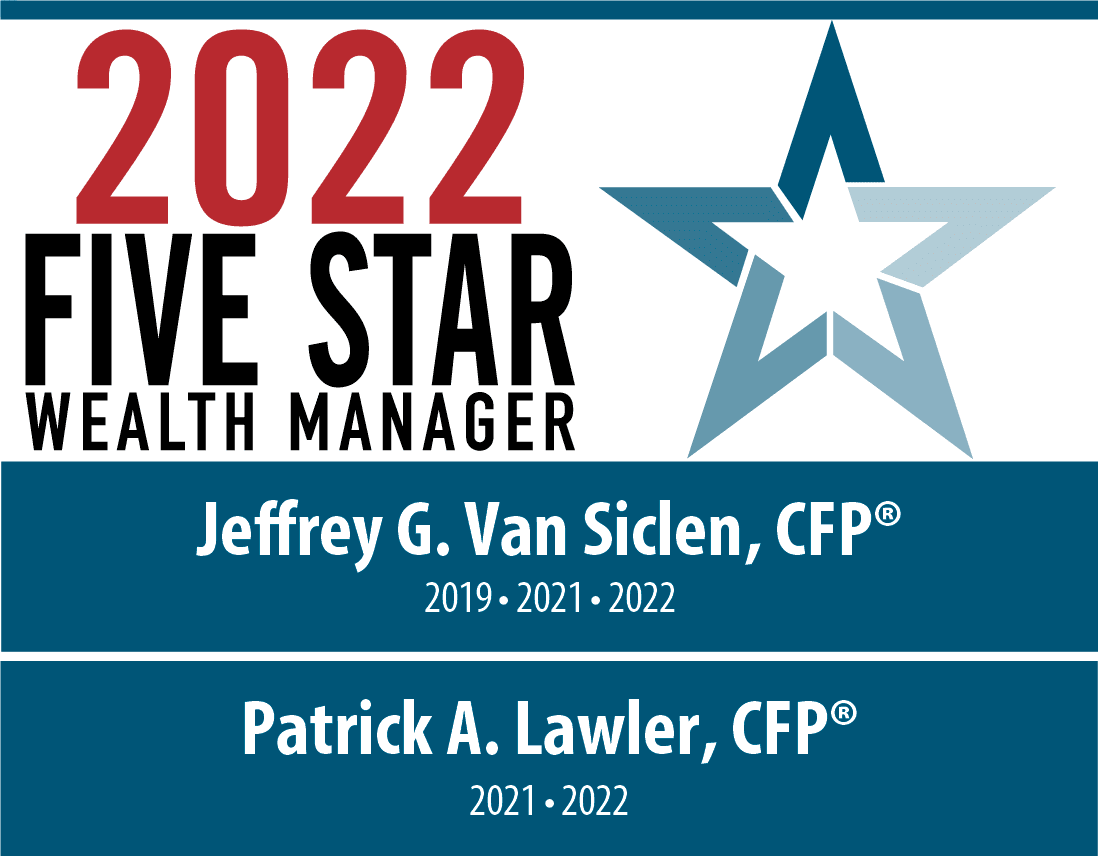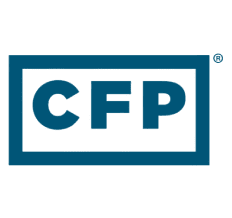The Client
A couple in their mid-30s with one young child and another on the way were both high earners in the biotech industry. From day one at each of their jobs the couple tried to save as much money as they could, and took advantage of the company benefits offered, leaving them both with a large amount of Non-Qualified Stock Options (NQOs). An NQO allows the employee to purchase a stock of the company they work for at a fixed price for a defined period. When the market value of the stock rises, this allows the employee to profit from the difference.1
The couples combined income was approximately $300,000 per year and had $70,000 in savings. The couple owned their home and had many long- and short-term financial goals.
The Dilemma
The couple had goals for their retirement and paying for college for their young children, but there were many other goals and milestones they wanted to plan for before their retirement and having college aged children. The couple wanted to plan for a potential second home, future trips, and most importantly childcare and child expenses with the arrival of their second child.
The couple was facing a few challenges to creating a successful financial path to achieve their goals. A few of these challenges were theirs savings were in cash, they had a large amount of employee stock, and they needed a potential tax-free savings vehicle.
The Approach
The goal of the LRVS Advisory group was to identify the goals of the client, both short and long term, and create a fluid plan to a successful path to achieve these goals.
First, the LRVS advisor looked at the couple’s savings strategy. The couple was saving as much as they could into cash. The LRVS advisor created a staged savings strategy, meaning depending on the time of their lives the amount they save would be different. For example, the couple was saving about $5,000 a month before they had children. When their first came along they decided they would need an extra $1,000 a month for childcare expenses, and when they had their second child, they allocated another $1,000 that they would need, leaving them saving $3,000 a month. Once their children went to school, they would save more each month.
Next, the advisor looked at the couple’s investment assets. The couple had a large, concentrated position in both of their employee stock, around 80% of their total investments. The team diversified and systematized their investment process. The advisor created a tiered limit order for the couple’s company stock, taking the stress and emotion out of selling the stock. A tiered limit order set into place automatic selling of the company stock if it hit a certain amount and defined date.
Lastly, the advisor repositioned the client’s assets from a tax perspective. The maximum amount of money that can be put into a 401(k) per year is $58,000 (2021), which includes employee deferral, the company match and any excess allowed by the company’s plan. 3 In this case the client worked for a company whose plan allowed for spillover contributions and annual in-service rollover to a Roth IRA. The advisor shared with the couple that there was an option to contribute the excess to a spill over 401(k) and complete the annual in-service rollover. Due to the couple’s incomes, they were contributing the max to the 401(k) causing tax implications on future withdrawals. By contributing to the spillover 401(k) the client could roll over this after-tax spillover contribution annually without paying income taxes on that specific spillover amount allowing it to grow tax-free for the future.4
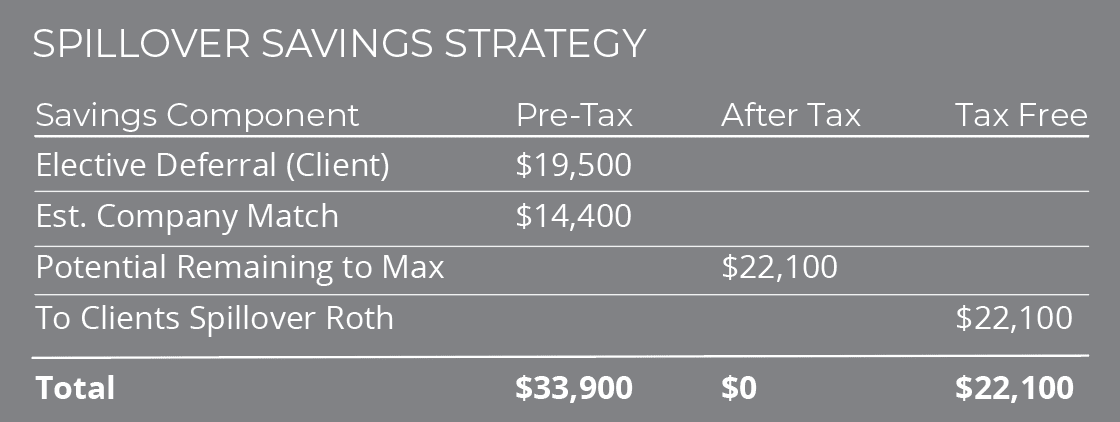
(Please note that The LRVS Advisory group is always looking at changes in tax legislation, that could change or close these loop holes. There are other strategies that the clients can utilize to maintain their same tax diversified savings strategy.)
The Outcome
With the staged saving strategy, it still allowed for the couple to add to their savings every year, even though they had more expenses with the births of their children. By diversifying the couple’s portfolio and creating a tiered limit order for their company stock, the advisor reduced the concentrated stock position. By outlining the couple’s short-term and long-term goals, the advisor was able to give the couple the option to retire a couple years earlier than their intended age. The advisor focused on the couple’s two-, five-, seven- and 30-year goals, building in potential unforeseen events, and gave the couple the confidence that they will achieve their short- and long-term goals.
Talking to an LRVS advisor about your financial goals is the first step towards a path of custom direction to achieve those goals. Visit our website at www.lrvsadvisory.com to schedule a complimentary meeting today to learn more about what the team can do for you.
- When do we start collecting from Social Security?
- How long will our money last?
- Which accounts do we take distributions from and when do we take them?
- What are the tax implications from collecting distributions?
- Which funds do we sell in order to cover monthly expenses?
- What is a sustainable withdrawal rate?
- How do we create a consistent income during a volatile market?
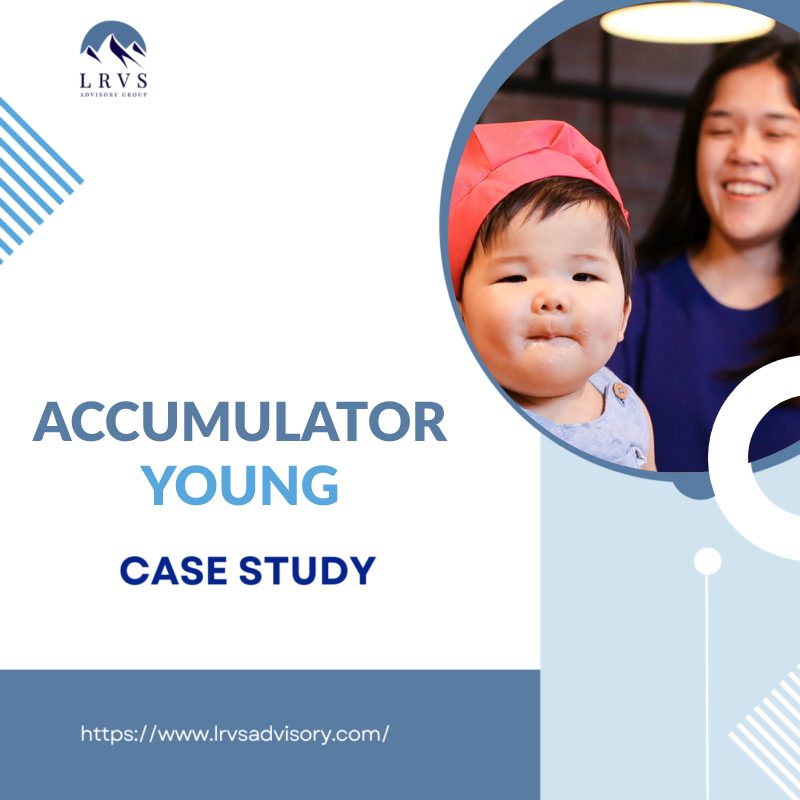
Young Accumulator Case Study
Young Accumulator Case Study
*Past performance does not guarantee future results and your results will vary.
**Hypothetical performance results have been provided for general comparison purposes only. Past performance may not be indicative of future results. Different types of investments involve varying degrees of risk. Therefore, it should not be assumed that future performance of any specific investment or investment strategy will be profitable or equal to the corresponding indicated performance level(s).
***This article is provided by Fortis Capital Advisors, LLC dba LRVS Advisory Group for informational purposes only. Investing involves the risk of loss and investors should be prepared to bear potential losses. Past performance may not be indicative of future results and may have been impacted by events and economic conditions that will not prevail in the future. No portion of this article is to be construed as a solicitation to buy or sell a security or the provision of personalized investment, tax, or legal advice. Certain information contained in this report is derived from sources that Fortis Capital Advisors believes to be reliable; however, the Firm does not guarantee the accuracy or timeliness of such information and assumes no liability for any resulting damages.
†Fortis Capital Advisors, LLC dba LRVS Advisory Group is an SEC registered investment adviser that maintains a principal place of business in the State of Pennsylvania. The Firm may only transact business in those states in which it is notice filed or qualifies for a corresponding exemption from such requirements. For information about Fortis Capital Advisors, LLC dba LRVS Advisory Group registration status and business operations, please consult the Firm’s Form ADV disclosure documents, the most recent versions of which are available on the SEC’s Investment Adviser Public Disclosure website at www.adviserinfo.sec.gov.
††This hypothetical case study is provided for illustrative purposes only and does not represent nor is it intended to represent actual client experiences but is rather an amalgam of several clients. An individual’s experience may vary based on his or her individual circumstances. There can be no assurance that Fortis Capital Advisors, LLC (“Fortis Capital Advisors”) will be able to achieve similar results in comparable situations. No portion of these writings is to be interpreted as a testimonial or endorsement of Fortis Capital Advisor’s investment advisory services and it is not known whether the hypothetical clients referenced approve of Fortis Capital Advisors or its services, nor are these writings intended to imply the Firm’s strategies will be successful. The information contained herein should not be construed as personalized investment advice. Past performance is no guarantee of future results. There is no guarantee that the views and opinions expressed in this article will come to pass. Investing in the stock market involves gains and losses and may not be suitable for all investors. Information presented herein is subject to change without notice and should not be considered as a solicitation to buy or sell any security. For additional information about Fortis Capital Advisors, including fees and services, send our disclosure statement as set forth on Form ADV from Fortis Capital Advisors using the contact information herein. Please read the disclosure statement carefully before you invest or send money.




